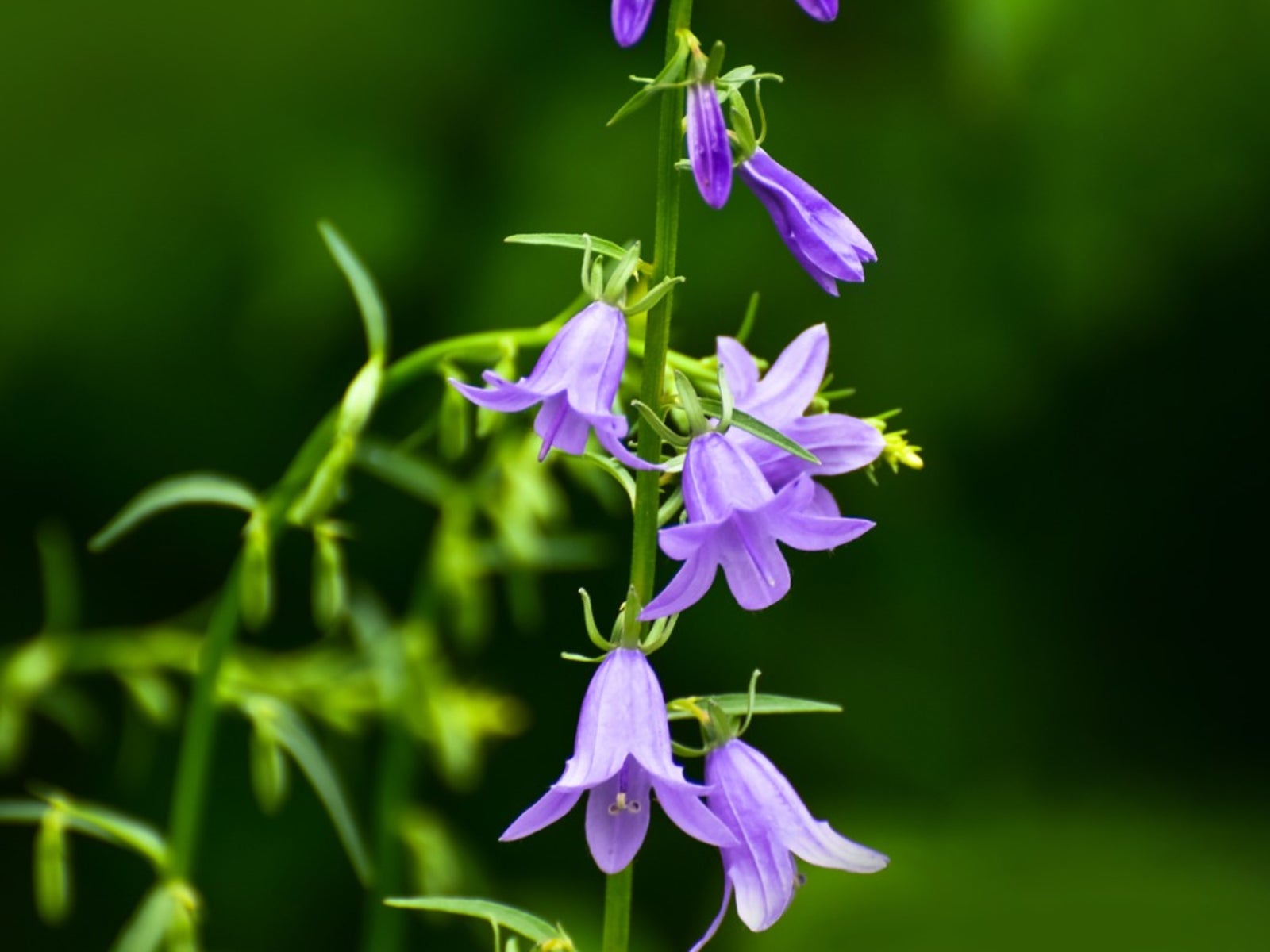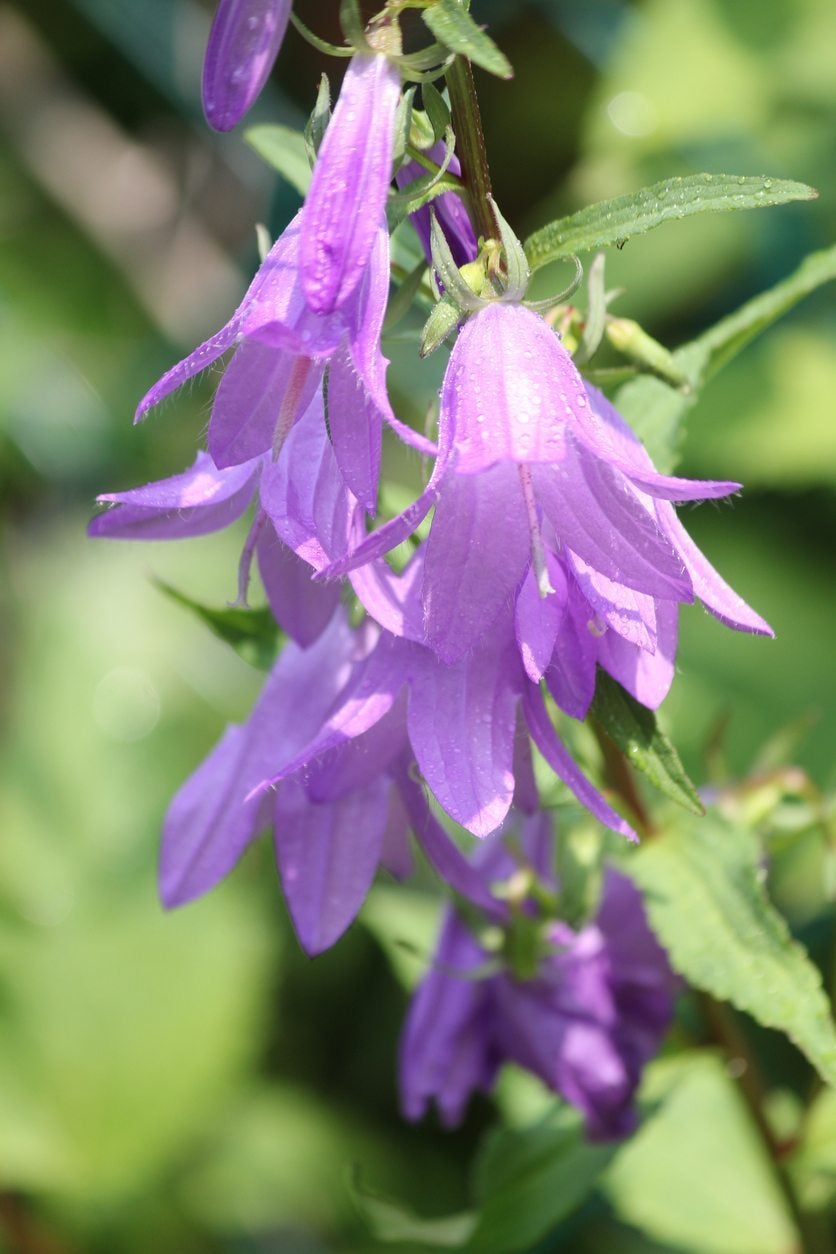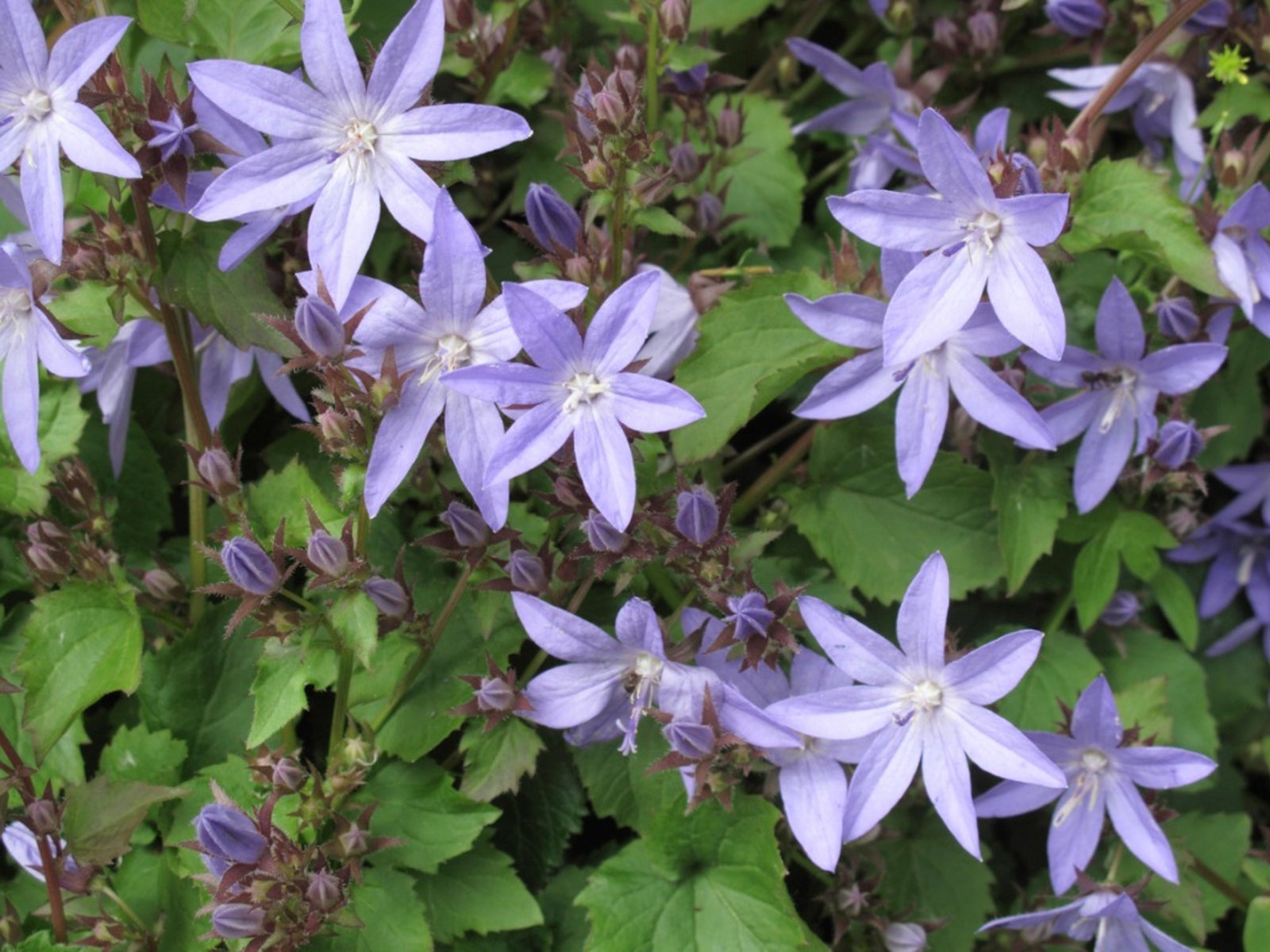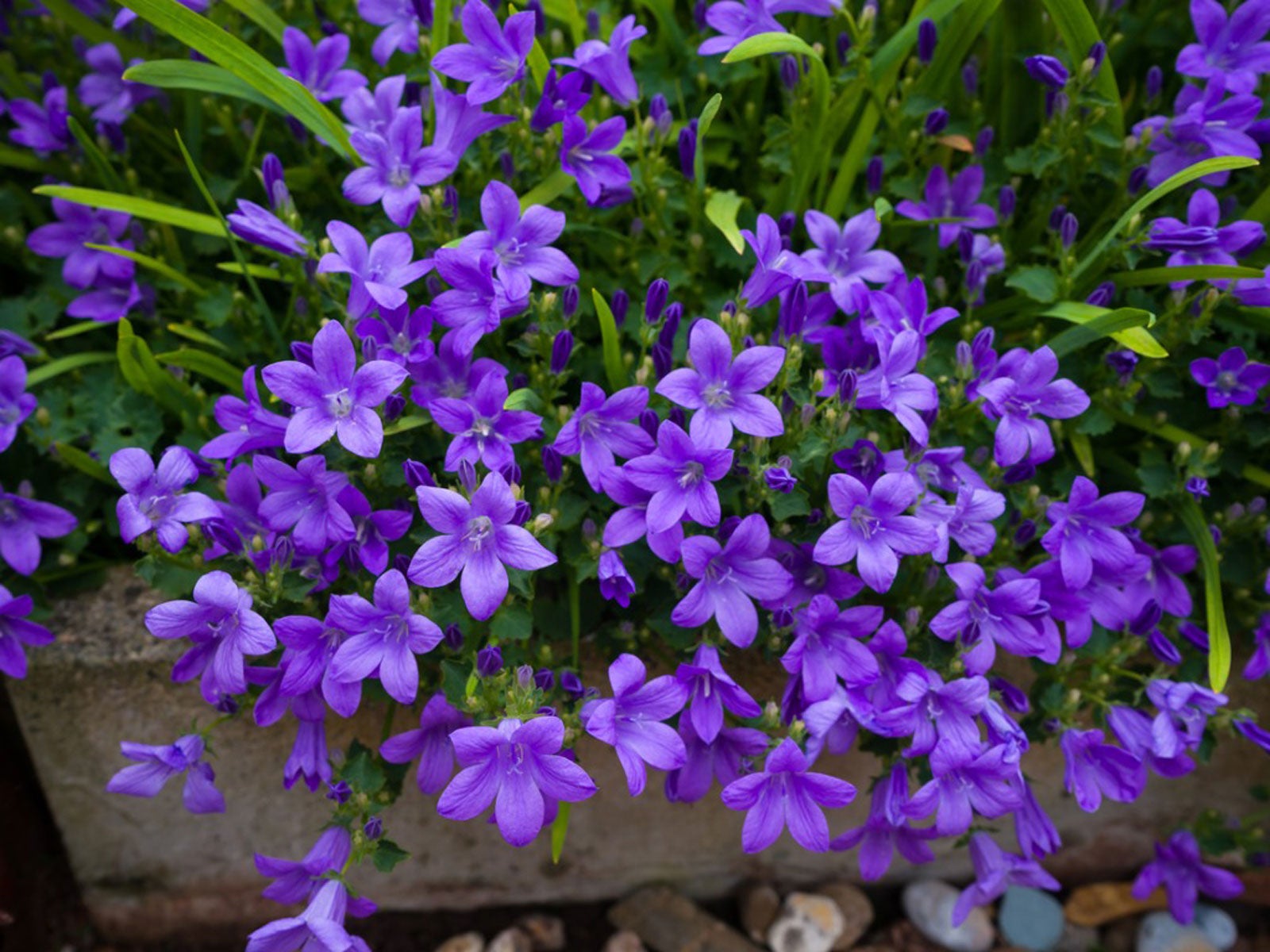Campanula Propagation - How To Plant Campanula Seed


Since most are biennial, propagating campanula plants, or bellflowers, is often required in order to enjoy their blooms each year. Although the plants may readily self-seed in some areas, many people simply choose to collect seeds for campanula propagation their selves. Of course, they can also be propagated through transplanting or division.
How to Plant Campanula Seed
Growing campanula from seed is easy; but if you're planting seeds for campanula propagation, you'll need to do so at least eight to ten weeks prior to spring. Since the seeds are so small, they barely need covering. Simply sprinkle them over a seed-starting tray filled with moist peat or potting mix (with about three seeds per cell) and cover them lightly. Then place the tray in a warm location of 65 to 70 degrees F. (18-21 C.) with plenty of sun and keep it moist. You can also scatter the seeds directly into the garden and gently rake some soil over them. Within about two to three weeks, campanula sprouts should appear.
Transplanting & Propagating Campanula through Division
Once they reach about 4 inches (10 cm.) tall, you can begin transplanting the campanula seedlings into the garden or larger, individual pots. Make sure they have well-draining soil in a fairly sunny location. When planting, make the hole large enough to accommodate the seedling but not too deep, as the top portion of the roots should remain at ground level. Water well after planting. Note: The seedlings normally don't bloom during their first year. You can also propagate campanula through division. This is usually done in spring once new growth appears. Dig at least 8 inches (20.5 cm.) from the plant all the way around and gently lift the clump from the ground. Use your hands, a knife, or a spade shovel to pull or cut apart the plant into two or more rooted sections. Replant these elsewhere at the same depth and in similar growing conditions. Water thoroughly after planting.
Gardening tips, videos, info and more delivered right to your inbox!
Sign up for the Gardening Know How newsletter today and receive a free copy of our e-book "How to Grow Delicious Tomatoes".

Nikki Tilley has been gardening for nearly three decades. The former Senior Editor and Archivist of Gardening Know How, Nikki has also authored six gardening books.
-
 Looking For Plants To Give You The Soft And Fuzzies? Try These 5 Fuzzy Leaf Plant Options
Looking For Plants To Give You The Soft And Fuzzies? Try These 5 Fuzzy Leaf Plant OptionsLovers of texture, drama, silver foliage and tactile plants will adore these special sensory garden additions. These fuzzy leaf plant options will leave you all aglow
By Susan Albert
-
 Get Ready For A Summer Of Hummers! Grow These Full Sun Hummingbird Plants and Flowers
Get Ready For A Summer Of Hummers! Grow These Full Sun Hummingbird Plants and FlowersIf you’re lucky enough to enjoy a sunny backyard, make sure you are maxing out on your pollinator opportunities and grow these full sun hummingbird plants and flowers
By Tonya Barnett
-
 What Is Creeping Bellflower & Tips On Removing Creeping Bellflower In Gardens
What Is Creeping Bellflower & Tips On Removing Creeping Bellflower In GardensExactly what is the problem with creeping bellflower in gardens? This lovely little plant with the pretty purple blooms is actually a burly thug that can create absolute havoc for unsuspecting gardeners. Learn about removing creeping bellflowers here.
By Mary H. Dyer
-
 Serbian Bellflower Care: Tips On Growing Serbian Bellflowers
Serbian Bellflower Care: Tips On Growing Serbian BellflowersSerbian bellflower plants are a great way to add long-lasting color to the home landscape. Serbian bellflower care is minimal and you'll find it is one of the easiest plants to grow. Read this article for more info.
By Becca Badgett
-
 Campanula Care: How To Grow A Bellflower Plant
Campanula Care: How To Grow A Bellflower PlantThe lovely campanula flower, or bellflower, comes in different colors, shapes and sizes, and adds a bright, delicate element to a yard, garden or planter.
By Bonnie L. Grant